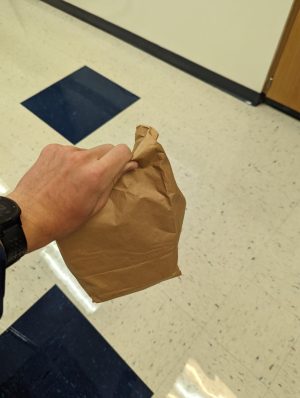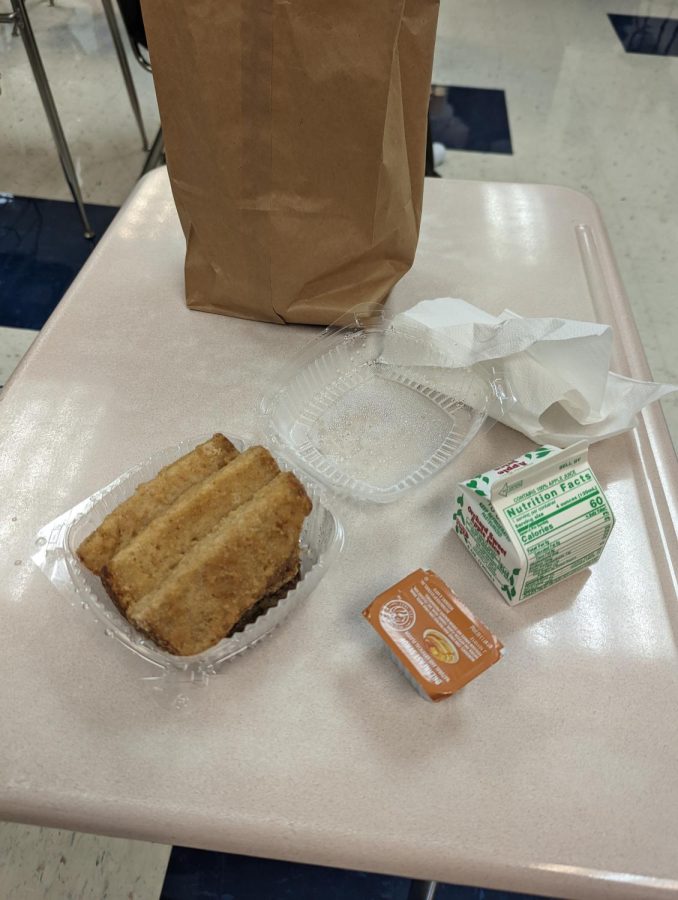Free breakfast returns to Norwin
On Oct. 1, the Universal Free Breakfast Program took effect in Pennsylvania, affecting nearly two million children.
A typical free breakfast, shown here, contains a breakfast entree (french toast sticks and sausage) and a piece of fruit or fruit juice (apple juice).
October 18, 2022
On Oct. 1, breakfast became free for all school children in the state of Pennsylvania; it will stay that way until the end of the 22-23 school year.
The Universal Free Breakfast Program, which costs $21.5 million, was announced by Governor Tom Wolf on Sep. 9 and affects nearly 1.7 million children. The money will come from the state’s School Food General Services Fund, which ended the 21-22 year with leftover money because of the federal government’s free breakfast and lunch program.
“Regardless of whether or not they qualify for free or reduced meals normally, every student enrolled in public and private schools will have the opportunity to feed their belly before they feed their minds,” Wolf said in a press conference.
A similar program was implemented in Pennsylvania a few years ago, in the midst of the COVID-19 pandemic. At Norwin, it was rolled out in the fall last year, and it was a major hit among students.
“I personally got breakfast everyday since it was free, which was great because before, I would usually skip the meal,” junior Cole Kubistek said.
One of the major perks was the “classroom delivery” aspect of the program, where breakfast foods were sent up to various classrooms. Students could pick and choose what they wanted to eat, and they could enjoy it wherever their first period was.
However, the program looks a little different this year, as free breakfast is only available during the beginning of the day at the entrance of the school. Only a “full breakfast,” pre-selected and packed by the school, is provided without charge, and extra items still come at a cost.

“I think that was mainly the principals’ decision,” Rod Stewart, Norwin High School cafeteria director, said. “We left the option [of classroom delivery] for them this year, but I think their reasoning was that last year, they were keeping kids apart, and the classroom delivery helped with that, but now, with the pandemic winding down, they don’t mind having everyone in the same place.”
The changes left a bitter taste in the mouths of some students, who complained of both quantity and nutrition.
“The fact that you can only take one thing is just silly,” sophomore Niko Kelly said. “You can’t possibly justify making it free by saying something like ‘it’s the most important meal of the day’ if you won’t even let students satisfy their hunger. This is totally unproductive.”
A typical breakfast consists of a breakfast entree, such as french toast sticks or a breakfast sandwich, and either a piece of fresh fruit or a carton of juice. Many students would like to see improvements to the program.
“I think that maybe having some more options each day would be better for students to provide that range of nutrition,” Kubistek said.
Still, it offers a chance to gain some nourishment before the school day begins, which was not seen in schools before the COVID-19 pandemic. State officials estimate that the Free Breakfast program increased students’ breakfast consumption by 16 percent.
“It allows those who are less fortunate to eat, and they don’t have to worry about it at home,” junior Austin Hladek said. “If I was in a rush from home to school and didn’t eat breakfast, this could also make it easier to get.”



